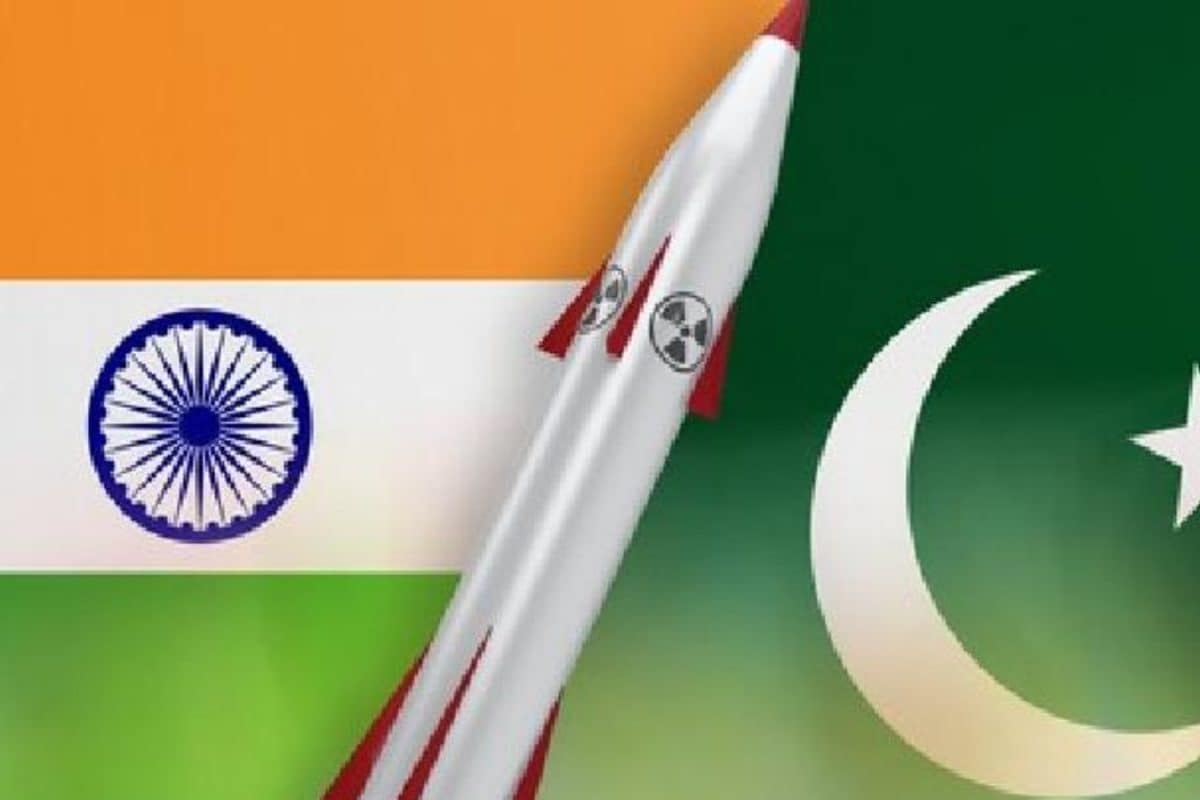

India's strategic military position in South Asia is experiencing a significant shift, with recent reports highlighting its growing nuclear capabilities and advancements in missile technology, giving it a distinct edge over Pakistan.
According to the latest findings from the Stockholm International Peace Research Institute (SIPRI), India has been actively enhancing its nuclear arsenal. The country's nuclear warhead count has risen from 172 in 2024 to an estimated 180 in 2025. This increase signifies India's commitment to strengthening its nuclear deterrence. Furthermore, India is making considerable progress in developing more sophisticated nuclear delivery systems. A key feature of this advancement is the development of 'canisterised' missiles. These missiles offer enhanced safety in transporting warheads and possess the potential to carry multiple warheads per missile in the future, significantly boosting India's strike capabilities. The Agni Prime (Agni-P) missile, with a range of 1,000 to 2,000 kilometers, and the MIRV-capable Agni-5 missile, capable of striking targets over 5,000 kilometers away, are prime examples of these advancements. The successful testing of the Agni-5 missile equipped with Multiple Independently Targetable Re-entry Vehicle (MIRV) technology in March 2023 was a milestone. MIRV technology enables a single missile to carry and independently target multiple warheads, substantially enhancing India's nuclear deterrence capabilities.
In contrast, while Pakistan is also expanding its nuclear capabilities by accumulating more fissile material and developing new delivery platforms, its progress is comparatively limited. This indicates a long-term intent to grow its arsenal, but it struggles with economic constraints. India's defense budget for 2025–26 is approximately $79 billion, nearly ten times Pakistan's budget of around $8 billion. This disparity in financial resources enables India to invest more extensively in advanced military hardware and technology. Pakistan, burdened by the need to maintain a large standing army and a credible nuclear deterrent, is increasingly compelled to prioritize its modernization efforts due to limited resources.
The US Defence Intelligence Agency's '2025 Worldwide Threat Assessment' report acknowledges Pakistan's ongoing efforts to modernize its nuclear arsenal and related capabilities to counter India's conventional military advantage. However, the report also highlights that Pakistan perceives India as an "existential threat" and is likely to continue investing in nuclear and military modernization, despite internal challenges such as militant violence.
India's advancements extend beyond nuclear capabilities to include cutting-edge missile technology. India successfully tested its first long-range hypersonic missile on November 17, 2023. This achievement places India among a select group of countries, including the US, Russia, and China, capable of deploying hypersonic technologies. Hypersonic missiles, traveling at speeds of Mach 5 or faster, are highly maneuverable, difficult to track, and capable of penetrating even the most advanced missile defense systems. Moreover, on November 15, 2023, India's second indigenous nuclear-powered submarine, INS Arighaat, launched the K-4 missile, which has a range of 3,500 km, strengthening India's nuclear triad, providing the ability to launch nuclear weapons from land, air, and sea platforms.
India has also established an Integrated Rocket Force (IRF) to enhance its conventional prowess and capability to conduct non-contact warfare. The IRF would comprise mainly of Pralay missiles. Furthermore, the test of the Phase II Air Defense (AD) endo-atmospheric missile indicates that India's indigenous Ballistic Missile Defense (BMD) system is in an advanced phase. The reported range of the missile is 5,000 km, providing India with the capability to intercept an adversary's missile in its terminal stage.
While India's growing military strength undoubtedly provides it with a strategic advantage, it also raises concerns about regional stability. SIPRI has highlighted the risks of escalation in conflicts between nuclear-armed neighbors, particularly following military clashes. The report warns that strikes on nuclear infrastructure and misinformation could escalate conventional conflicts into nuclear crises.